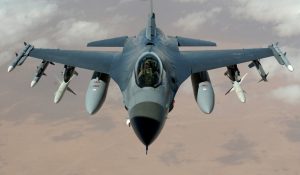17-22A
View AMS Numbers >
Steel 17-22A
Steel 17-22A is structural low alloy steel with ultra-high-strength, high-temperature strength, and high heat resistance. It is mostly used for parts that are exposed to high temperatures for short periods. These include manufacturing shafts, studs, and fasteners, mechanical parts in aviation, mechanical parts in engines, steam turbines, industrial furnaces, guided missiles, turbine rotors, and petrochemical engineering operations. Steel 17-22A is available in the form of bar, forgings, mechanical tubing and forging stock.
All Steel 17-22A specifications have excellent machinability and toughness, quickly respond to heat treatments, and also show resistance to high-temperature oxidation. This alloy has a high percentage of Carbon, Molybdenum, Vanadium, and Chromium.
Tech Steel & Materials offers Steel 17-22A in 4-sub-type specifications and multiple shapes/forms:
- AMS 6303 (Bar and Forging)
- AMS 6304 (Bar, Forging, and Tubing)
- AMS 6305 (Bar, Forging, and Tubing)
- AMS 6436 (Plate, Sheet, and Strip)
Chemical Properties
| Element | min | max |
| Carbon | 0.40 | 0.50 |
| Manganese | 0.40 | 0.70 |
| Silicon | 0.15 | 0.35 |
| Phosphorus | — | 0.025 |
| Sulfur | — | 0.025 |
| Chromium | 0.80 | 1.10 |
| Molybdenum | 0.45 | 0.65 |
| Vanadium | 0.25 | 0.35 |
| Nickel | — | 0.25 |
| Copper | — | 0.35 |
| Iron | Balance* |
*Not exclusively to the element mentioned, but that one predominates other elements that are used only in minimal quantities.
Fabrication and Working Instructions
The Steel 17-22A with a 1000-hour rupture strength at 1100°F (593°C) of 30,000 psi. However, some tests show that it is notch-sensitive at rupture times over 100 hours, with the cracking being more severe at higher temperatures. Notch rupture can be mitigated by designing parts without sharp notches, where cracking will most-likely occur.
Welding can be done using the most popular methods, such as arc welding and gas welding. The use of a welding rod with the 17-22A(S) specification (with higher carbon and chromium content) is recommended for welding. Preheating of the part should be done at 600°F before welding, followed by stress relief or post-heating.
Heat Treatment
Steel 17-22A is normalized, annealed and oil quenched for tensile strength of 1-inch diameter parts of 87,000 and yield strength of 67,800.
- Normalizing – heat the material to 1700-1850°F (926-1010°C) and hold at that temperature for one hour for each inch of thickness. Then the air-cool technique is recommended, with fan-cooling for larger sections in order to accelerate the cooling process. All surfaces of the part must have access to air when cooling.
- Annealing – heat the material to 1450°F (787°C) for and hold at that temperature for one hour for each inch of thickness. Cool for 17.5 hours (20°F or 11°C per hour) to get to 1100°F (593°C).
- In case of oil quenching, heat the material to 1750°F (955°C) first for each inch of thickness.
For pancake forgings (tensile strength of 142,000 and yield strength of 126,500), the next steps apply:
- Normalizing – heat the material to 1800°F (982°C).
- Tempering –is done at 1225°F (663°C) for 6 hours.
Mechanical Properties
| Tensile strength | 231-231 | σb/MPa |
| Yield Strength | 154 | σ 0.2 ≥ /MPa |
| Elongation | 56 | δ5 ≥ (%) |
| ψ | — | ψ ≥ (%) |
| Akv | — | Akv ≥ /J |
| HBS | 235-268 | — |
| HRC | 30 | — |
Physical Properties
| Tensile strength | 115-234 | σb/MPa |
| Yield Strength | 23 | σ 0.2 ≥/MPa |
| Elongation | 65 | δ5 ≥ (%) |
| ψ | — | ψ ≥ (%) |
| Akv | — | Akv ≥ /J |
| HBS | 123-321 | — |
| HRC | 30 | — |


 Tech Steel & Materials
Tech Steel & Materials